




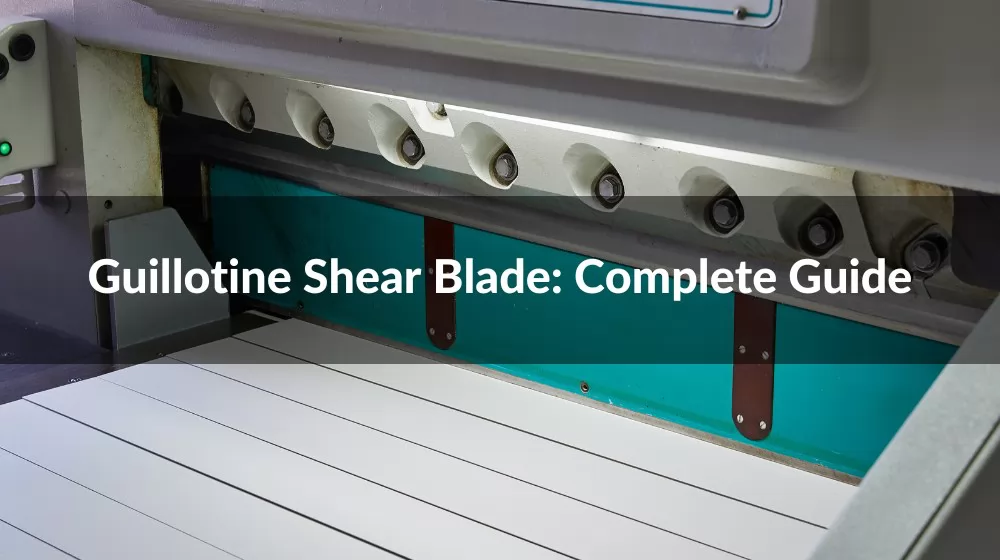
Welcome to our comprehensive guide on guillotine shear blades, the indispensable tools in the world of metal fabrication. Whether you're a seasoned professional or new to the field, understanding the nuances of these blades can significantly enhance your operational efficiency and product quality. Dive into our detailed exploration, covering everything from the basics of guillotine shear blades to maintenance, safety, and selection tips, ensuring your cutting tasks are completed with precision and ease.
Ever wondered what gives metal sheets their neat, precise cuts? Meet the unsung hero of the metal fabrication industry: Guillotine Shear Blades. These are not your ordinary blades; guillotine shear blades are specialized tools used for cutting metal sheets with a straight, clean edge. Thanks to their robust design and sharp edges, they can slice through materials like a hot knife through butter, ensuring high precision and efficiency in sheet metal fabrication.
The primary function of guillotine shear blades is not just to cut, but to do so in a manner that maintains the integrity of the metal sheet, preventing warping or material distortion. This precision ensures that the metal's dimensions are retained for further processing or application in various industries. Whether it’s for automotive, aerospace, or construction, the accuracy provided by these blades is unparalleled, making them an indispensable tool in the metalworking sector.
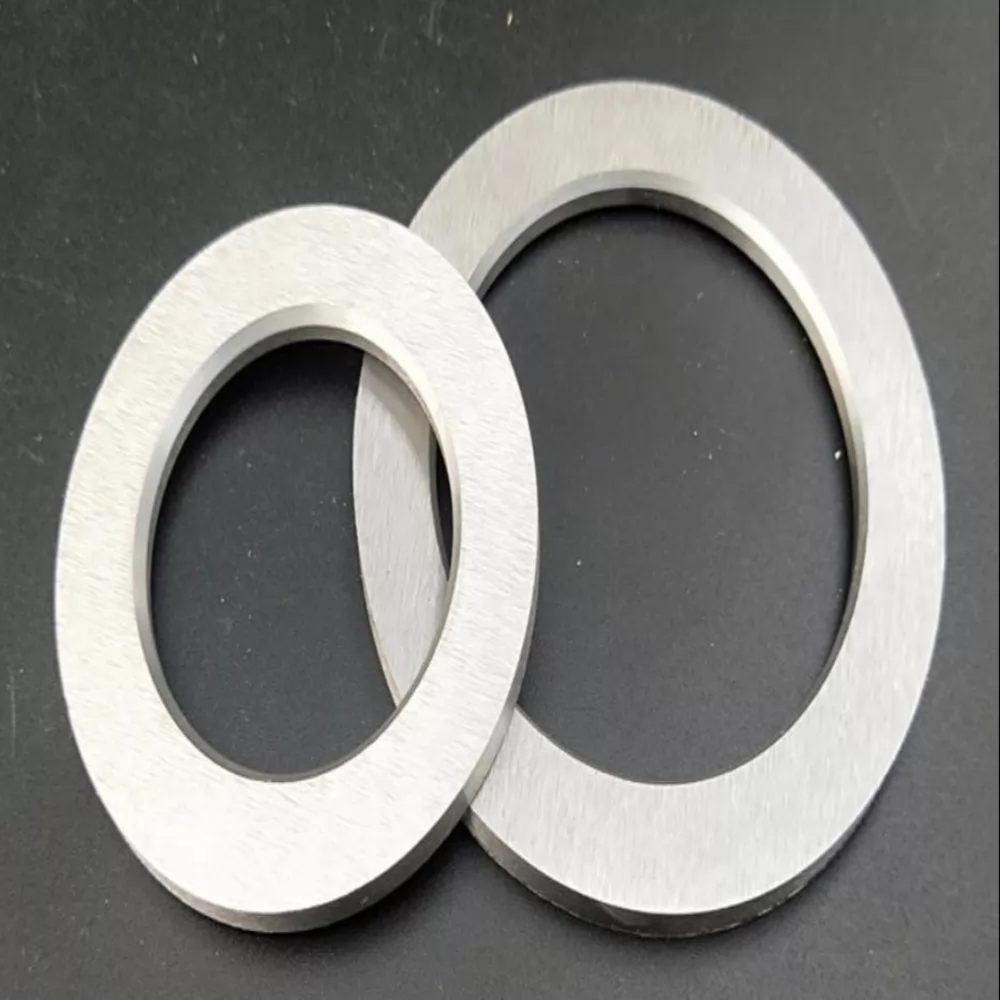
Diving into the world of guillotine shear blades, you'll find a fascinating array of types each designed to meet specific cutting requirements. Let's explore the major categories:
In the realm of guillotine shear blades, the two main contenders are straight blades and rotary blades. Straight blades are the traditional choice for clean, straight cuts. They're your go-to for precision slicing, especially for metal sheets, offering clean and crisp edges every time.
On the other hand, rotary blades bring a different flavor to the table. They rotate to slice, making them ideal for materials that require continuous cutting action, like paper or textiles. While they might not always offer the razor-sharp precision of straight blades, their efficiency and speed are unmatched for specific applications.
Not all materials bow down to the same blade – that’s why there are material-specific guillotine shear blades. Metal blades are the heavy lifters, crafted from high-grade steel or sometimes even carbide, designed to tackle everything from thin aluminum sheets to thick steel plates. These blades ensure smooth, burr-free cuts, preserving the integrity and shape of the metal.
Then there are blades for softer materials like plastic and paper. These blades may not need the same brute strength as metal-cutting ones, but they require a keen edge to ensure a clean cut without snagging or tearing. Each blade type is tailored to the material's properties, ensuring that whether you're slicing through thick plastic sheets or stacks of paper, the cut is always clean, precise, and exactly what you need.
The effectiveness of guillotine shear blades doesn't just stem from their design but also from the materials they're crafted from. Each material offers distinct properties that can significantly impact the blade's performance, longevity, and suitability for specific cutting tasks. Let’s delve into the most common materials:
High carbon steel is a classic favorite in the manufacturing of guillotine shear blades. Known for its durability and hardness, high carbon steel can withstand the demands of cutting tough materials. But its real superpower lies in its ability to be sharpened to a very fine edge, making it perfect for precision cutting tasks. However, it’s worth noting that while high carbon steel is incredibly effective, it requires regular maintenance to prevent rusting and to maintain its sharp edge.
For those looking for something a notch above high carbon steel, carbide-tipped blades step up to the plate. These blades have a base material of steel, but the cutting edge is tipped with carbide—a material so hard that it can cut through almost anything like a hot knife through butter. Carbide-tipped blades are particularly valued for their longevity and ability to maintain a sharp edge, even after extensive use. They're ideal for users who require a blade that can stand up to continuous, heavy-duty cutting operations without frequent resharpening.
Last but definitely not least, we have bimetallic blades. These are the hybrids of the blade world, combining two different types of metal to create a super-blade. Typically, bimetallic blades feature a high-speed steel cutting edge welded to a flexible steel body. This combination provides the perfect balance between cutting performance and blade resilience, allowing for precise cuts without the risk of blade cracking or breaking. Bimetallic blades are particularly popular in high-demand environments where both precision and durability are required.
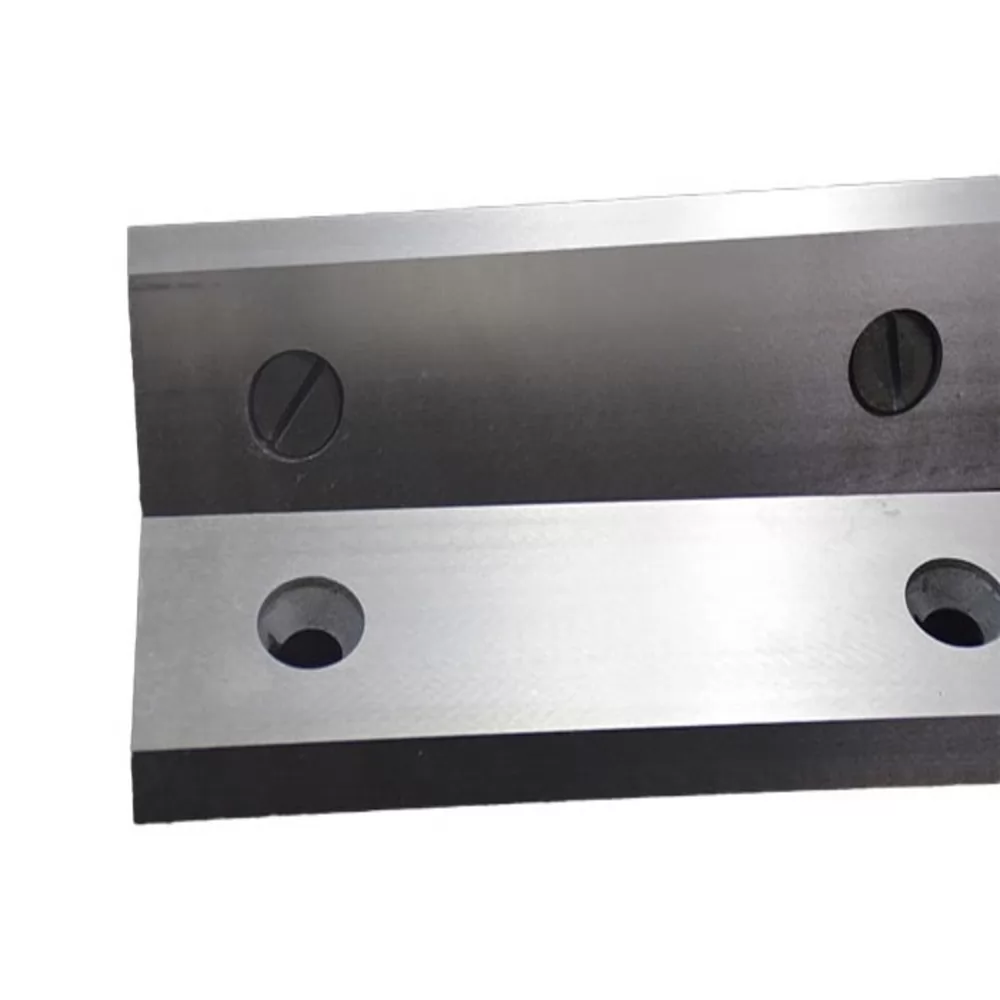
When it comes to the efficiency and effectiveness of guillotine shear blades, design and engineering play pivotal roles. Every aspect from blade geometry to edge design contributes to the blade's overall performance. Let's break down these crucial elements:
The geometry of a blade refers to its shape, size, and the angle at which it cuts. It's not a one-size-fits-all scenario; different materials and cutting requirements demand specific blade geometries. The length, height, and thickness of the blade must all be optimized for the specific type of shear and material being cut. The geometry of the blade can significantly influence the machine's capacity to make clean, precise cuts, as well as its ability to handle different thicknesses and types of material.
The edge of the blade is where the cutting actually happens, so its design is crucial. Serrated edges have teeth-like structures, which can be perfect for gripping and cutting tougher materials. They create a more aggressive cut and are typically used for materials that may slide or move during cutting. On the other hand, smooth edges are ideal for clean, straight cuts on softer materials. They glide through the material for a clean shear with minimal distortion or material displacement.
The cutting angle and clearance between blades are critical factors that affect the quality of the cut and the life of the blade. The angle of the blade determines how the metal is sheared and can affect both the force required and the quality of the cut. A sharper angle requires less force but might not be suitable for all materials or thicknesses. Clearance, or the space between the upper and lower blades, is equally important. Too little clearance can result in a rough cut, while too much clearance can lead to a distorted or incomplete cut. The optimal clearance depends on the type of material and its thickness, ensuring that the shear action produces clean, precise cuts every time.
Installing guillotine shear blades correctly is critical to ensure optimal performance and safety in metal fabrication operations. A poorly installed blade can lead to inaccurate cuts, increased wear and tear, and even hazardous working conditions. Here’s a step-by-step guide to ensure proper installation:
Before beginning the installation process, ensure that all safety protocols are in place. Turn off the power to the shear machine to prevent any accidental startups. Wear appropriate personal protective equipment (PPE), including gloves and safety glasses, to protect yourself from sharp edges and heavy components.
Carefully remove the old blades from the machine. This might require loosening bolts or screws that hold the blades in place. Keep track of all parts removed and handle the old blades with care, as they can still be sharp and hazardous.
Once the old blades are removed, clean the blade area thoroughly. Remove any debris, dirt, or remnants from the previous cutting operations. Inspect the blade holders for any signs of wear or damage. Ensuring that the area is clean and in good condition is crucial for the new blades to fit and operate correctly.
Carefully position the new guillotine shear blades in the machine. Make sure they are aligned properly according to the manufacturer’s specifications. The blades should be installed with the cutting edge facing the correct direction and securely fastened into place. Ensure that all bolts and screws are tightened to the specified torque to avoid any movement or misalignment during operation.
After the new blades are installed, turn the power back on and perform a test run (without cutting material initially) to ensure that the blades are moving correctly. Then, proceed with test cuts on scrap material to verify the accuracy and quality of the cuts. Adjust the blade clearance as needed to accommodate the specific type of material being cut. Fine-tuning the machine settings might be necessary to achieve optimal cutting performance.
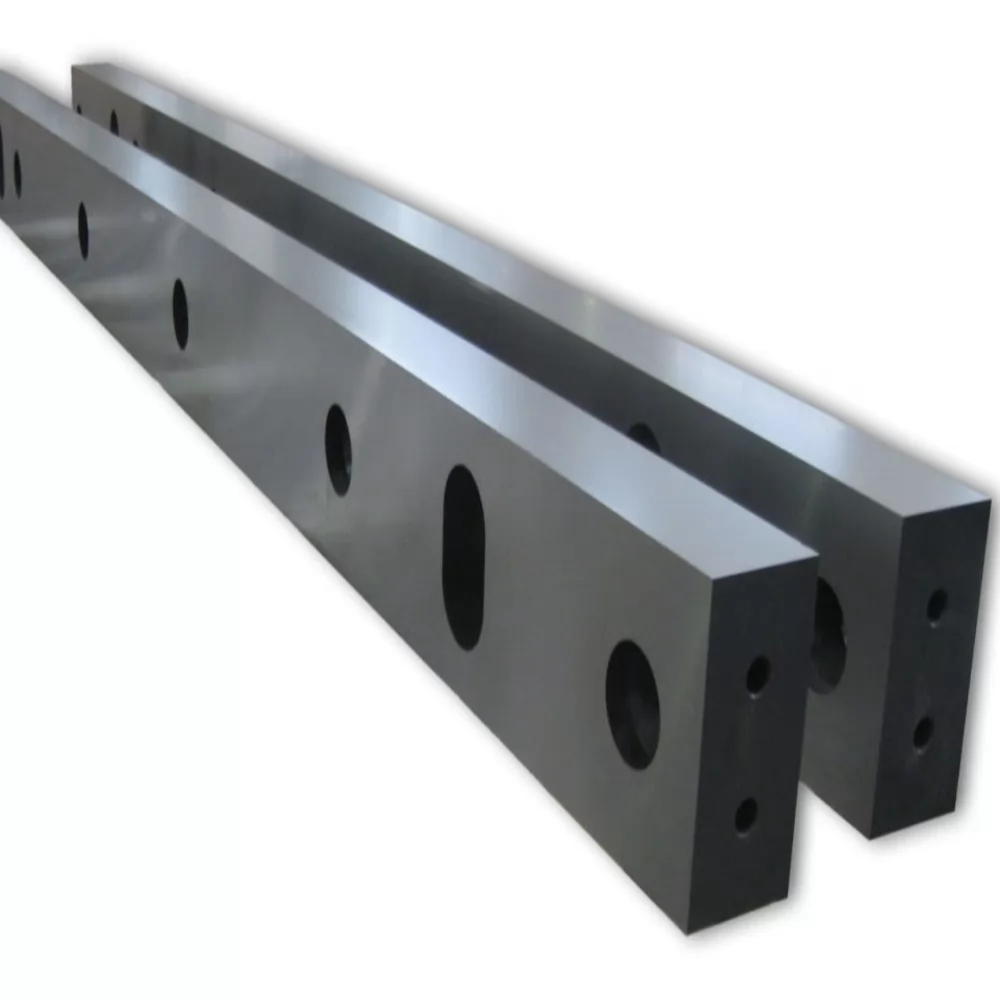
Mastering the art of using guillotine shear blades is not just about installation but also about understanding the nuances of proper usage and techniques. The way you use the shear, including how you adjust for different materials, significantly impacts the quality of the cut, the longevity of the blades, and the overall productivity of your operations. Let’s explore some key aspects:
Different materials require different approaches when using guillotine shear blades. Metal sheets, for instance, demand precision and a steady hand, whereas cutting softer materials like plastic or paper might require less force but greater attention to speed and alignment. Always refer to the material guidelines and adjust the machine settings accordingly. Ensure that the material is securely fixed before cutting to avoid any movement, which could result in imprecise cuts or damage to the material.
The speed and force of the cut are crucial variables that need to be adjusted based on the thickness and type of material being cut. Thick, tough materials require more force but a slower cutting speed to ensure a clean cut without damaging the blade or the material. Conversely, thinner materials can be cut faster but require less force. It's essential to find the right balance between speed and force to maximize efficiency and ensure the longevity of your guillotine shear blades.
Additionally, always make sure the blades are properly aligned and the cutting angle is set correctly for the type of material you're cutting. Misalignment or incorrect settings can lead to uneven wear on the blades and poor-quality cuts. Regularly check and maintain your machine's settings to ensure optimal performance.
Proper usage and technique when operating guillotine shears are fundamental to achieving the desired results. By understanding and respecting the capabilities and limitations of your guillotine shear blades, you can ensure precise cuts, extend the life of your blades, and maintain high productivity in your metal fabrication processes.
The longevity and efficiency of your guillotine shear blades heavily depend on regular maintenance and care. A well-maintained blade not only ensures consistent, high-quality cuts but also extends the lifespan of your equipment, saving you time and money in the long run. Let's delve into the essential aspects of maintaining your blades:
Keeping your guillotine shear blades clean is crucial for maintaining their performance and preventing rust and corrosion. After each use, wipe down the blades with a clean, dry cloth to remove any debris or residues. For more thorough cleaning, use a solvent or degreaser that is safe for metal surfaces. Be sure to dry the blades thoroughly after cleaning to prevent moisture-related damage. Regular cleaning not only prolongs the life of your blades but also ensures they are always ready for precise cutting.
Sharp blades are essential for efficient cutting and clean, precise cuts. Over time, even the best guillotine shear blades will dull and require sharpening. It's important to use the correct sharpening techniques to avoid damaging the blades. This often involves using a precision grinding machine, ensuring the correct angle and maintaining the original blade profile. If you're not experienced in blade sharpening, it's advisable to use professional sharpening services to ensure the best results.
Regular inspection of your guillotine shear blades will help you determine when they need to be replaced. Look for signs of wear, such as nicks, cracks, or a decrease in cutting performance. Establishing a regular replacement schedule based on your usage and the materials you cut can help prevent unexpected downtime and maintain consistent quality. Generally, blades should be inspected at regular intervals and replaced as necessary to ensure optimal cutting performance.
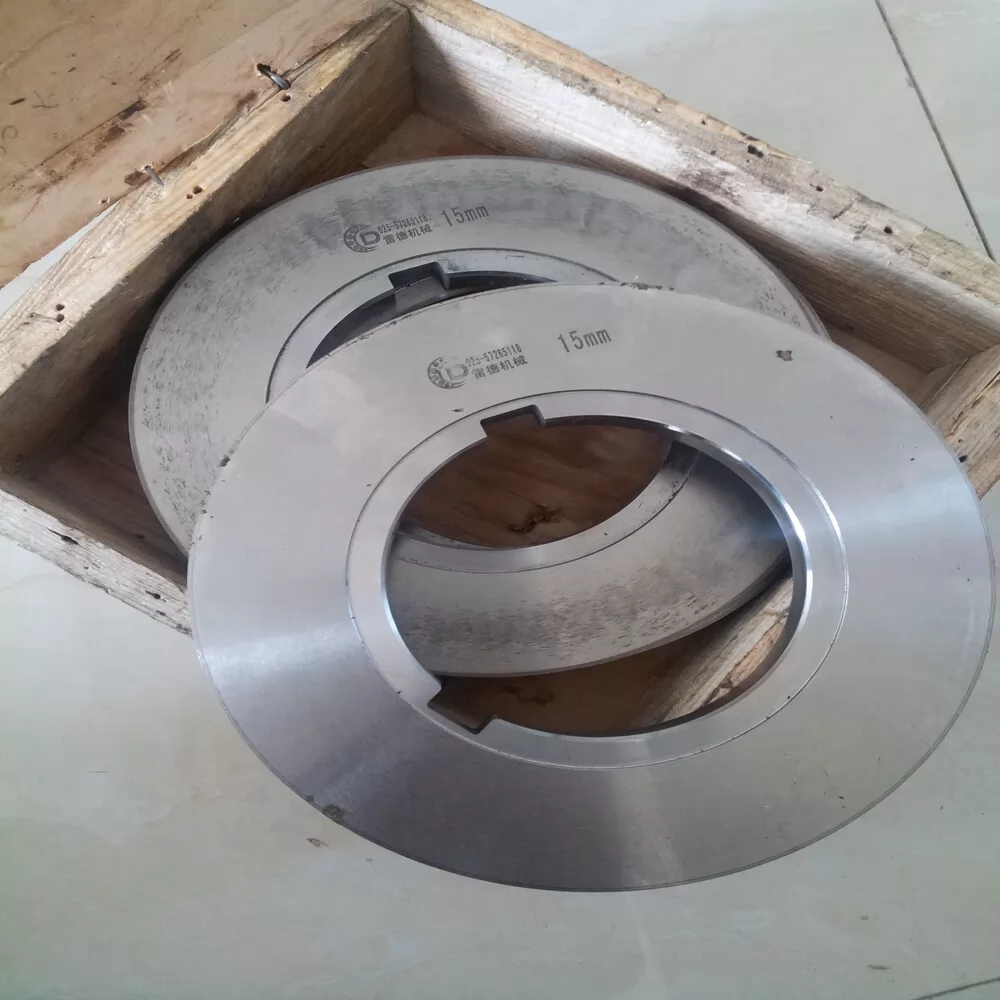
Even with meticulous maintenance and care, issues can arise with guillotine shear blades that affect their performance. Identifying and resolving these common problems promptly can help maintain operational efficiency and extend the life of your equipment. Here’s how to troubleshoot some of the most frequent issues:
Dull blades are often the culprits behind poor cutting performance. Signs of a dull blade include ragged cuts, increased resistance during cutting, and a necessity to apply more force than usual. To resolve this issue, inspect the blades for dullness and sharpen them according to the manufacturer's recommendations. Regular sharpening and maintenance schedules can prevent the blades from becoming excessively dull and minimize downtime.
Misalignment of guillotine shear blades can lead to uneven cuts and can also be dangerous for the operator. If the cuts are not straight or there is visible blade deflection, it's likely that the blades are misaligned. Check the alignment according to the machine's manual and adjust as needed. Proper alignment ensures uniform cuts and reduces unnecessary wear on the blades and machine components.
If you’re experiencing irregular cuts, several factors could be at play, including dull or misaligned blades, incorrect blade clearance, or using the wrong blade type for the material. To troubleshoot, start by inspecting the blades and machine setup. Ensure that the correct blade type and clearance are being used for the material. Additionally, check the machine's hold-down pressure and adjust if necessary to prevent material slippage during cutting.
By effectively diagnosing and resolving these common issues, you can ensure that your guillotine shear blades continue to perform optimally, producing clean, precise cuts and maintaining workflow efficiency. Remember, regular check-ups and maintenance are your best defense against these problems, keeping your operations smooth and productive.
Selecting the right guillotine shear blades is crucial for achieving the best cutting performance and extending the life of your machinery. With various options available, it can be overwhelming to decide. However, by considering the following factors, you can make an informed decision that meets your specific needs:
The type and thickness of the materials you plan to cut are perhaps the most crucial factors to consider. Different materials require different blade specifications to achieve optimal cuts. For instance, cutting thick metal sheets demands blades made from stronger materials like high carbon steel or carbide, whereas thinner sheets or softer materials might only require standard steel blades. Ensure the blades you choose are suitable for the specific material and thickness you'll be working with.
The material of the blades themselves plays a significant role in their cutting efficiency and lifespan. High carbon steel, carbide-tipped, and bimetallic blades each offer different levels of durability and performance. Consider the frequency of use and the types of materials you'll be cutting when choosing the blade material. Investing in more durable blades can be more cost-effective in the long run for high-volume cutting environments.
Not all blades will fit all machines. Before purchasing new guillotine shear blades, verify their compatibility with your existing equipment. This includes not only the size and shape but also the blade's mounting system and operational parameters. Incorrectly fitted blades can lead to poor cutting performance and can even damage your machine.
Choosing blades from a reputable manufacturer can make a significant difference in performance and reliability. Look for manufacturers with positive reviews and a track record of quality. Additionally, consider the level of support and service they offer. Having access to professional advice, sharpening services, and warranty options can be invaluable.
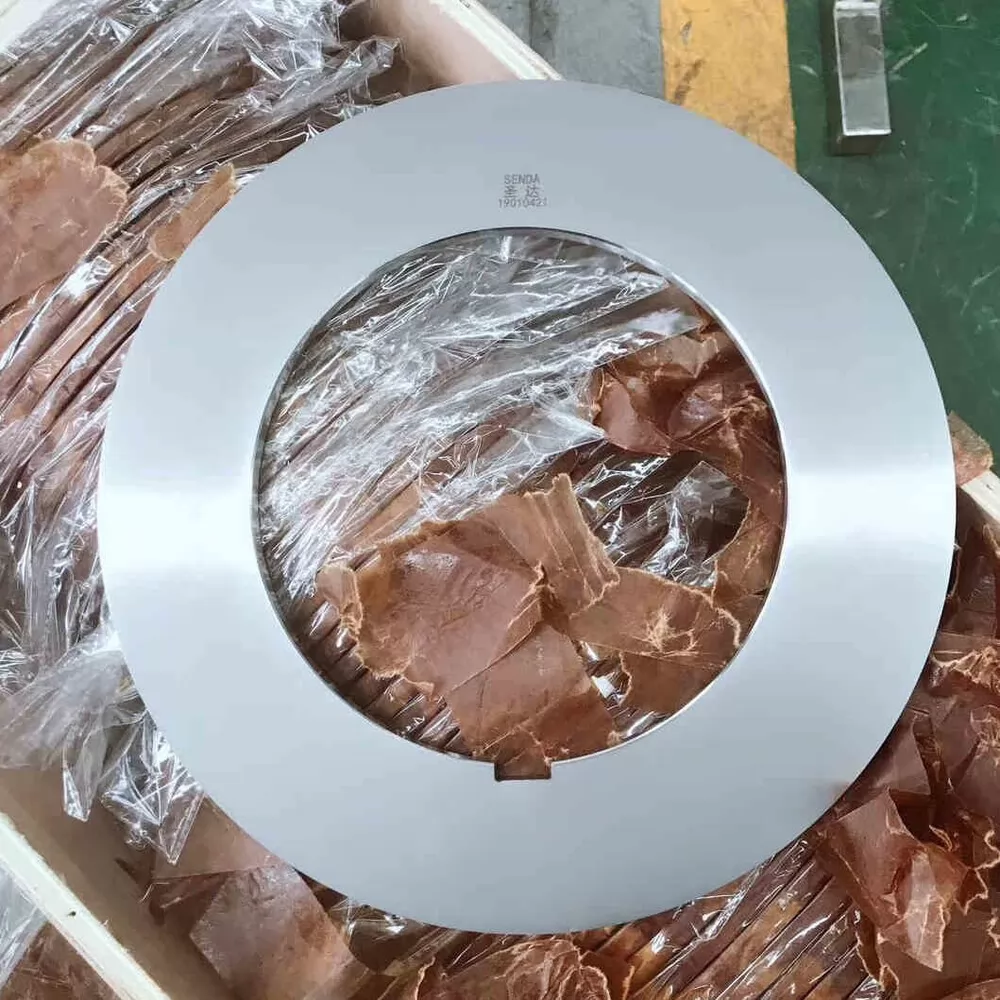
Selecting the right manufacturer for your guillotine shear blades is as crucial as choosing the blades themselves. The right manufacturer can provide not only high-quality products but also valuable support and services. Here are some key factors to consider when selecting a shear blade manufacturer:
The quality of the blades largely depends on the materials used and the manufacturing processes. Look for manufacturers that use high-grade materials and have a robust quality control system in place. The best manufacturers often provide detailed information about their materials, processes, and standards.
Experience matters when it comes to manufacturing guillotine shear blades. Manufacturers with years of industry experience are more likely to understand the nuances of blade production and the specific needs of different cutting applications. They can provide expert advice based on real-world applications and long-term performance data.
Good customer support can significantly enhance your experience with a manufacturer. Look for companies that offer comprehensive services, including pre-sales consultations, after-sales support, and blade maintenance services. The ability to easily access support and service can be a significant advantage, especially when unexpected issues arise.
A wide product range and customization options can be beneficial, especially if you have specific requirements or operate various types of shearing machines. A good manufacturer should be able to provide blades that meet your exact needs, whether standard or custom-sized, for different applications.
Finally, consider the manufacturer’s reputation in the industry. Look for reviews, testimonials, and case studies from other customers. Positive feedback from other users can be a good indicator of the manufacturer's reliability and the quality of their blades.
By taking these factors into account, you can select a guillotine shear blade manufacturer that not only provides high-quality products but also supports your business needs effectively. Remember, the right manufacturer is a partner in your operational success, providing solutions that help you achieve optimal cutting performance and efficiency.
In conclusion, selecting and maintaining the right guillotine shear blades is crucial for achieving the best results in your metal fabrication tasks. From understanding different materials and designs to implementing proper maintenance routines, every detail contributes to the efficiency and longevity of your blades. For those in pursuit of unparalleled quality and performance, look no further than Shinite, the leading manufacturer of guillotine shear blades. Explore our wide range of top-tier products and services designed to elevate your cutting processes at https://www.shiniteknife.com/. Join the multitude of satisfied customers who trust Shinite for their metal fabrication needs and experience the difference quality makes.
The lifespan of a guillotine shear blade can vary significantly based on several factors, including the type of material being cut, frequency of use, quality of the blade, and adherence to maintenance schedules. Generally, a well-maintained blade in a typical industrial setting can last anywhere from several months to a few years. Regular sharpening and proper usage can extend this lifespan significantly.
The frequency of sharpening or replacing guillotine shear blades depends on the amount of use and the types of materials being cut. Blades used in high-volume cutting operations or those cutting tougher materials may need to be sharpened every few months, whereas blades used less frequently or for softer materials might only need sharpening once a year. It’s essential to inspect your blades regularly for signs of wear and to sharpen or replace them as needed to ensure optimal cutting performance.
While guillotine shear blades are incredibly versatile, their ability to cut through different materials depends on the blade type, material, and thickness. Generally, these blades are designed for cutting various metals, but there are also specialized blades for cutting materials like plastic, paper, or fabric. It’s important to use the correct type of blade for the material you intend to cut to ensure safety and efficiency.
Safety should always be a priority when using guillotine shear blades. Key precautions include ensuring that safety guards are in place and functional, using proper personal protective equipment (PPE) such as gloves and eye protection, keeping hands and body parts away from moving blades, and following all operational guidelines and procedures. Regular maintenance and inspection of the machine and blades can also prevent accidents caused by malfunctions or wear.
Choosing the right blade involves considering several factors, including the type of material you will be cutting, the thickness of that material, the desired quality of the cut, and the specifications of your guillotine shear machine. Consult with blade manufacturers or suppliers, provide them with detailed information about your cutting requirements, and they can help you select the most appropriate blade for your needs. Additionally, considering material-specific blades and the blade's durability and maintenance requirements can lead to better performance and longer life.







Fastest
Installation

Top-Notch
Equipment

24/7 Customer
Support

100% Secured
Payment
